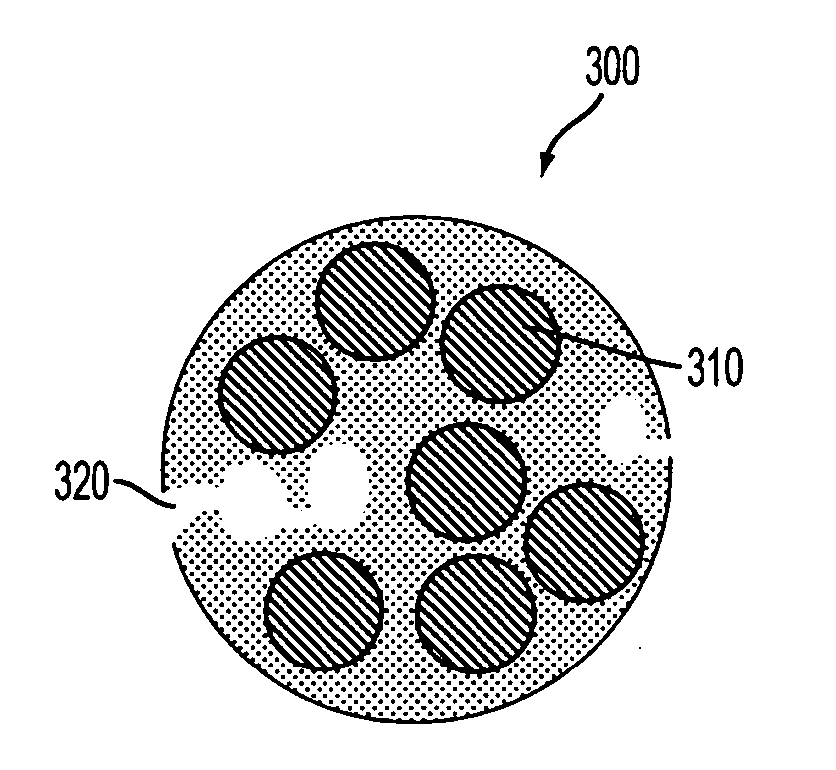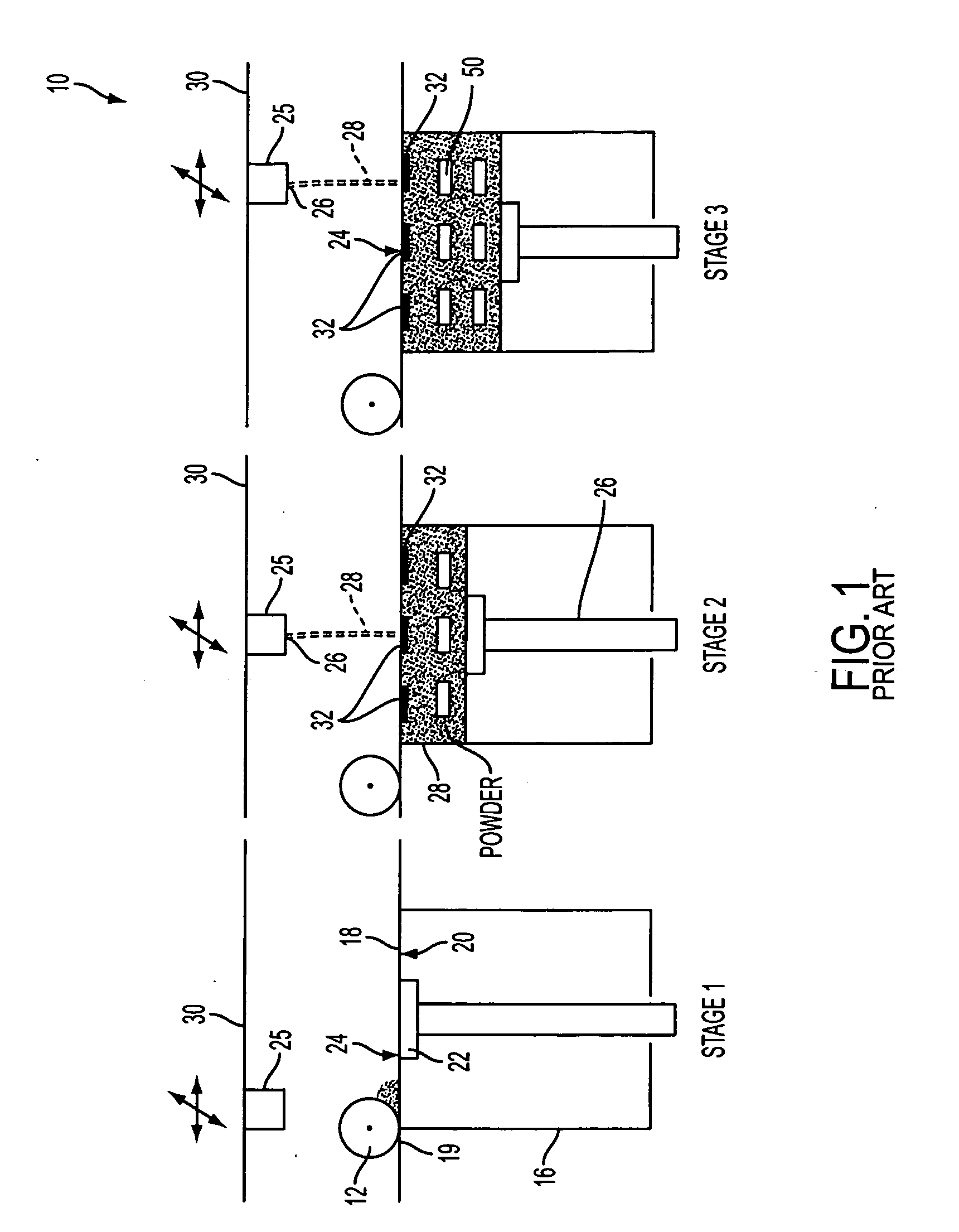Polymeric microbeads having characteristics favorable for bone growth, and process including three dimensional printing upon such microbeads
- Summary
- Abstract
- Description
- Claims
- Application Information
AI Technical Summary
Problems solved by technology
Method used
Image
Examples
example 1
[0072] A batch of polymer microbeads was prepared as follows. The first solvent was methylene chloride, and the second solvent was water. A first liquid was prepared by dissolving 6.944 grams of polycaprolactone (PCL) of Molecular Weight 85,000 Daltons (Sigma-Aldrich, St. Louis, Mo.) in 198.81 grams of methylene chloride (Sigma-Aldrich). This gave a concentration of PCL of 3.375% by weight. A second liquid was prepared by dissolving 5.101 grams of polyvinyl alcohol (PVA) 87-89% hydrolyzed, Molecular Weight 13,000 to 23,000 Daltons (Sigma-Aldrich) in 1020.2 grams of deionized water. The two liquids were then combined and agitated to form an emulsion of drops of the first liquid surrounded by a continuous phase of the second liquid. The emulsion was stirred using a magnetic stir bar at 200 rpm for 8 hours. This time period allowed the methylene chloride to diffuse out of the droplets into the polyvinyl alcohol dissolved in the water and then to evaporate from the open surface of the w...
example 2
[0074] This example repeats the process of Example 1, except that the batch size was larger and accordingly a longer time was used. In this example the batch of the first liquid was prepared using 24.89 grams of PCL dissolved in 712.57 grams of methylene chloride. The second liquid was prepared by dissolving 15.097 grams of PVA in 2986.9 grams of deionized water. The two liquids were mixed together and emulsified and the emulsion was stirred for 24 hours at 400 rpm using a Labmaster stirrer (SPX Corp., Wytheville, Va., Model No. 223116 fitted with a fan-type impeller, SPC Corp. Part No. A310). Then, similar to the previous Example, the microbeads were filtered and washed four times with 500 cc of deionized water. The filter cake was frozen at −70° C. and then lyophilized until dry. The powder was then sieved with a 106 micron screen, and the powder which passed through the 106 micron screen amounted to 22.48 g, resulting in a yield of 90% of the amount of PCL originally processed. T...
example 3
[0075] Example 3 illustrates the process of the present invention applied to a polymer of a somewhat smaller molecular weight than in Examples 1 and 2. In this example, the Molecular Weight of the PCL polymer was about 65,000 Daltons (Sigma-Aldrich, Milwaukee, Wis.). In general, the viscosity of the first liquid is known to influence the size of the droplets formed in the emulsion. In using this different molecular weight PCL, it was found that a different concentration of this polymer in methylene chloride could be used to result in approximately the same viscosity of the first liquid (the polymer solution) as for the solution which was used in Examples 1 and 2. For the selected polymer, PCL having a Molecular Weight of 65,000 Daltons, it was found that the viscosity of a 5 w / w % solution of this polymer was similar to the viscosity of the 3.375 w / w % PCL 85,000 Molecular Weight solution which was used in Examples 1 and 2. The agitation and other processing steps were performed sim...
PUM
| Property | Measurement | Unit |
|---|---|---|
| Temperature | aaaaa | aaaaa |
| Size | aaaaa | aaaaa |
| Solubility (mass) | aaaaa | aaaaa |
Abstract
Description
Claims
Application Information
 Login to View More
Login to View More - R&D
- Intellectual Property
- Life Sciences
- Materials
- Tech Scout
- Unparalleled Data Quality
- Higher Quality Content
- 60% Fewer Hallucinations
Browse by: Latest US Patents, China's latest patents, Technical Efficacy Thesaurus, Application Domain, Technology Topic, Popular Technical Reports.
© 2025 PatSnap. All rights reserved.Legal|Privacy policy|Modern Slavery Act Transparency Statement|Sitemap|About US| Contact US: help@patsnap.com



